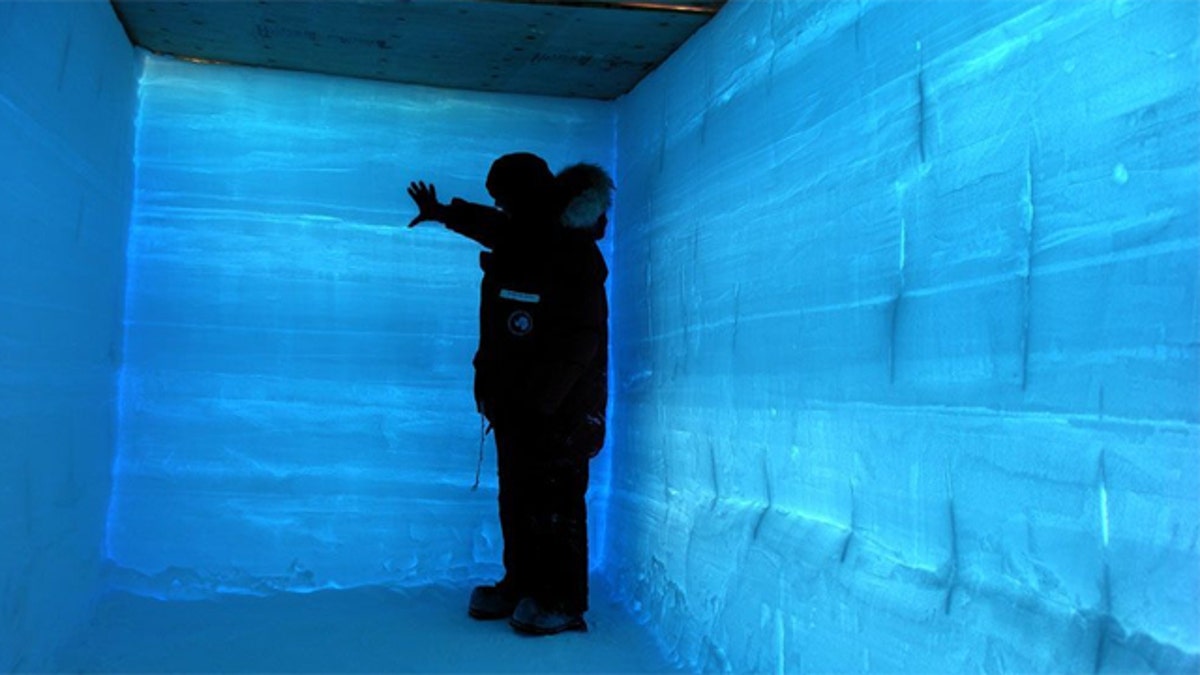
A researcher examines layers in a snow pit deposited by different storms.
An astoundingly long tube ripped from the Antarctica's icy belly may hold the secrets to Earth's past.
The West Antarctic Ice Sheet Divide Ice Core Project recently finished extracting the longest ice core ever drilled by U.S. scientists in Antarctica. The ice core -- a cylindrical sample of ice removed from a sheet in the southernmost continent -- measures 10,928 feet in length -- that's just over 2 miles -- and took five years to finally unearth.
Essentially layers upon layers of ancient frozen ice, the core could potentially provide a detailed look at the planet's climate up to 100,000 years ago.
“We’d like to get the most detailed record possible of how the Earth’s climate changes from an ice age into a warm period, like the one we’re experiencing now, which started about 11,000 plus years ago,” Professor Ed Brooks, a lead investigator on the project, told FoxNews.com. “There’s a lot of ice per year, and it’s detailed enough that we can look at things changing from decade to decade. No one’s been able to do that in Antarctica yet.”
Brook was a member of a team of scientists from across the country who have traveled to and from Antarctica in order to finally dig out the core. He said the process was very difficult, but well worth the hardship.
“This was really a heroic effort over a number of years,” Brook said. “You can only drill for two or three months during the Antarctic summer, when it’s stormy, still terribly cold and you can get a lot of drifting snow. The cores come up one piece at a time and it’s just slow, difficult work.”
Now that their toils have proved fruitful, the researchers will ship the ice core back to the United States where the sampling process will begin. The 5-inch diameter ice core is cut into 3 foot-long pieces and sent by ship and refrigerated truck to the National Science Foundation's National Ice Core Laboratory in Denver. The ice will then be cut into smaller samples and sent to 27 investigators around the U.S., who can then make measurements from it.
After much processing, photographing, and chemical measurements, those involved in the project may soon be able to uncover an extremely detailed record of Earth’s climate history.
By analyzing gases trapped in ancient bubbles in the ice formed tens of thousands of years ago, the timeline of Earth’s atmosphere will start to unfold. That timeline may include information on the Earth’s future.
”What we’d like to do now is to see how sensitive the Earth’s system is to changes in greenhouse gasses,” Brook told FoxNews.com. How has the planet responded when carbon levels in the atmosphere change?
"We have mathematical models to predict that response, but we’d really like to be able to test those. And with this core, we can actually watch the carbon dioxide levels evolve,” he said.
